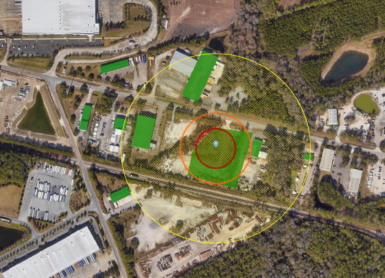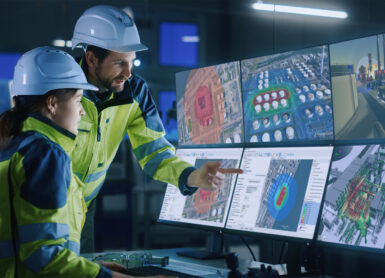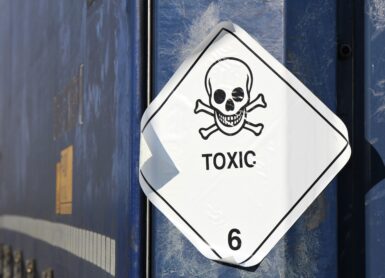
What to expect if there is a leak
Leaks of hazardous materials should always be avoided, but when preparing yourself for potential accidents, we DO want to know what to expect. We typically define “Loss of Containment” scenarios to describe where and how a leak might occur. However, we also need to predict the potential outcomes of a possible leak.
Can we have a fire, a toxic exposure, or an explosion phenomenon? And up to what distances do we have dangerous effects?
A leak from a gasoline tank will have a significantly different outcome than a leak from a propane vessel. And obviously, a rupture of an ammonia system requires other precautions than a discharge from a natural gas system. Thus, if we want to be prepared, we must distinguish different phenomena that might occur after a potential leak in our system.
This article will explain the importance of assessing the consequences of a potential release of a hazardous chemical substance and introduce you to the different dangerous phenomena that can occur upon such a loss of containment scenario. We will also show the application of event trees and reveal how are they used within the consequence modelling software tool EFFECTS when simulating the consequences of an accidental release of hazardous materials.
The importance of event trees
In order to predict what might happen, we use the so-called event trees, which illustrate the potential chain of events. The big difference between gasoline and propane leaks is mainly caused by the “chemical phase” of the material. That is the first characteristic that we should be aware of.
Gases
A gas release leads to different events than a liquid release, and to make things even more complicated, we also have “Pressurised Liquefied Gases” (PLGs) that behave differently. Therefore, event trees are specific to the chemical phase of the material of interest.
The figure below shows an example of an event tree for a gas Loss of Containment situation:

Instantaneous versus continuous events
First, we distinguish the “Instantaneous” event, which describes the catastrophic rupture of a vessel, from a “Continuous” leak situation. Given this instantaneous situation where the whole inventory of the vessel is released at once, three different events are possible:
- “Direct ignition” of the flammable cloud
- “Delayed ignition”, where the cloud has drifted away
- “No ignition”
The direct ignition of a flammable gas (e.g., methane) will not only create a fireball, but also the sudden expansion of the compressed gas, which will create an expansion wave. We refer to this phenomenon as a “gas blast” event. Apart from damage due to this overpressure wave, fragments of the ruptured pressurised vessel may also create additional damage. That is because the fragments may penetrate surrounding equipment. Such cascading or domino events may have to be evaluated separately.
The EFFECTS consequence modelling tool contains dedicated models to predict both fireball and blast events, which includes prediction of throwing range of potential fragments. For continuous (leak) situations of flammable gases, direct ignition will not create a fireball but result in a jet fire (a.k.a. torch fire or flare) event. For such a jet fire phenomenon, the release location (height), flame size and outflow angle will directly determine the radiation levels to the surrounding objects. The EFFECTS jet fire model has recently been adapted for typical hydrogen flames, giving a substantially lower heat radiation load compared to gases like methane or PLGs like propane.
Delayed ignition and confinement branches
An even more feared scenario for flammable gases is the delayed ignition event. What if the flammable gas cloud drifts away and reaches a confined area, where it gets ignited? As a result of some confinement (e.g., enclosure by a wall or ceiling) or obstruction by enclosed geometries (e.g., pipe racks), the ignition will not only create a flash fire, but the flame acceleration can also lead to a Vapour Cloud Explosion (VCE) phenomenon.
We must consider this event to be a combination of a gas blast (the initial expansion blast wave), a flash fire (sometimes called cloud fire) and a VCE. Many event trees simply suggest flash fire or VCE, but one cannot have a VCE without the effect of a flash fire as well. Furthermore, the initial blast wave may have destroyed glass windows already, leading to a different event because the flammable cloud might now penetrate buildings, so this outcome should be considered as well.
When expressing safety as risk values, the chance of ignition (both direct and delayed ignition) will start to play a major role. Therefore, the ignition probability is often illustrated as a “chance” number belonging to a branch of the event tree. We will usually want to avoid ignition (that’s why we also have ATEX regulations), but even an unignited gas cloud can create damage if it is toxic or suffocating. These toxic phenomena are evaluated using substance-specific dosage calculations, considering both concentration level and exposure duration in dedicated “toxic dispersion models”.
Pressurised Liquefied Gases
The event tree of a PLG differs slightly from the gas event tree because it contains a very typical “BLEVE” event. BLEVE is the abbreviation of a “Boiling Liquid Expanding Vapour Explosion”, which describes the pressure wave due to sudden expansion of the superheated liquid.

Although a BLEVE actually refers to an overpressure (explosion) phenomenon, it is often also associated with a more devastating fireball event. The LPG road tanker accident in Bologna in 2018 is an example that we probably all remember. We shouldn’t forget that although the fireball’s heat radiation often dominates the damage, the explosion blast itself is also very relevant. Furthermore, be aware that we can even have a BLEVE of a “safe” substance like water (superheated steam), so it is often the process conditions that determine the potential damage.
Furthermore, even a PLG release might rain out when sprayed into the air, creating a cold liquid pool. This potential pool can evaporate and (if flammable) be set on fire, even due to a flashback of the delayed ignition flammable cloud, creating a typical combination of flash fire, potential VCE and (late) pool fire. Because of different possible outcomes, EFFECTS fire models come in several flavours:
- Gas fireball (no liquid vapour expansion)
- BLEVE fireball
- Jet fire (for gases and PLGs)
- Pool fire
Liquids
To be complete, we also present the event tree for a typical liquid release.

For a liquid phase, the evaporation rate from the pool plays a major role, while the subsurface (water, concrete, tilted surfaces) and potential pool limitation (bunds) highly influence the outcome.
A prediction model for every phenomenon
Fortunately, every possible phenomenon has its own dedicated model in EFFECTS consequence analysis tool. In addition to dedicated fire, explosion or toxic models, EFFECTS also provides combined LoC scenarios that will evaluate all possible events. These combined LoC (Loss of Containment) scenarios will automatically assess the entire chain of events, based on process conditions and typical properties of the selected chemical. This “autopilot” mechanism avoids missing potentially dangerous phenomena, making EFFECTS a very efficient and user-friendly consequence modelling solution.
If you are interested, you can download a free viewing demo of EFFECTS, which includes several examples of “final event” (fire, explosion, toxic) models. The demo version also contains examples of combined LoC scenarios, illustrating the complete chain of events possible for a specific situation.
Do you like what you read?
Get the latest trends in the field of process safety management straight to your inbox, and enhance your skills through knowledge sharing from industry experts.


